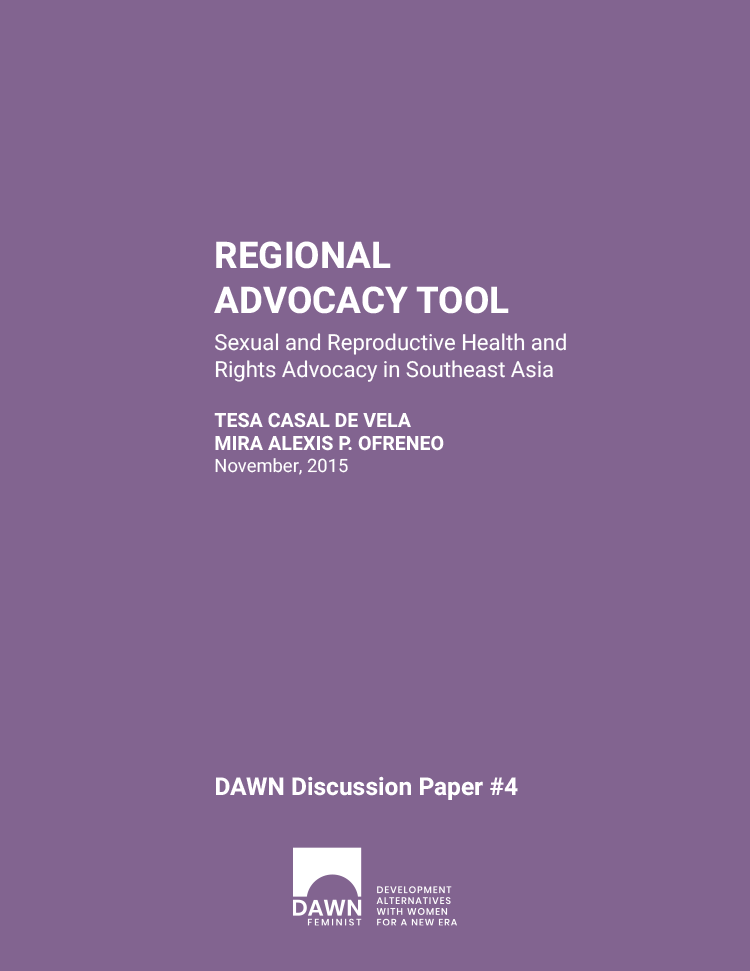Executive Summary
This report was commissioned by Development Alternatives with Women for a New Era (DAWN) to analyze the advances made, the barriers encountered and the regressions that have hindered progress of sexual and reproductive health and rights (SRHR) in the 10 countries that comprise South East Asia. In the two decades since the International Conference on Population and Development (ICPD) laid down the framework for a rights based approach to sustainable development, rooted in protecting and promoting SRHR for all, much has happened at the regional and country levels in South East Asia.
While progress has been made in certain aspects of SRHR, such as improvements in maternal health and survival, it has been uneven and variable across and within countries in the region. For example, the regional maternal mortality ratio (MMR) has decreased by more than half from 320/100,000 in 1990 to 140/100,000 in 2013. However, the MMR remains high in countries such as Lao PDR and Myanmar, and has increased in the Philippines. Young people continue to be excluded from provision of and access to sexual and reproductive health information, education and services, particularly in countries such as Indonesia, and all 10 countries score poorly with respect to advancing sexual rights, specifically of same sex attracted and gender diverse populations. Using illustrative country case studies from the Philippines, Indonesia and Malaysia, this report provides an in-depth analysis of key SRHR issues in three key thematic areas, namely:
- 1) Access to comprehensive and integrated sexual and reproductive health (SRH) services,
- 2) SRHR of young people, and
- 3) Sexual and reproductive rights.
The Philippine case study illustrates how the reproductive health movement was able to advance the Reproductive Health Law despite strong opposition from the most powerful social institution in the country, the Roman Catholic Church. The following factors were identified as facilitating the advancement of state policy on SRH services:
- 1) the strength of the women’s movement,
- 2) coalitional politics,
- 3) the power of multiple arguments based on rights, needs based and social justice discourses,
- 4) strong public opinion favoring the RH law,
- 5) research to support advocacy, and
- 6) political will.
The Indonesian case study demonstrates how the women’s movement was unable to advance SRH for young people as Islamic conservative groups positioned SRH as applicable only to legally married couples; excluding the unmarried in the Population Law and the Health Law. The barriers to advancing a state policy on SRH for the youth include:
- 1) the strengthening of Islamic conservative groups,
- 2) the weakening of women’s rights organizations, and
- 3) Islamic conservatism in the State.

